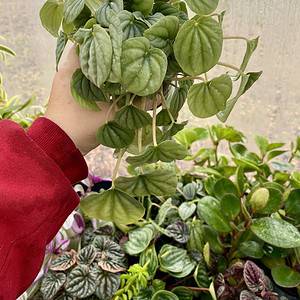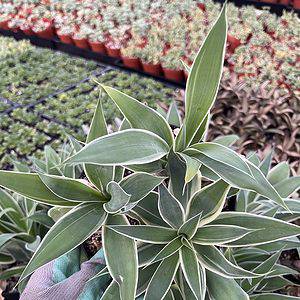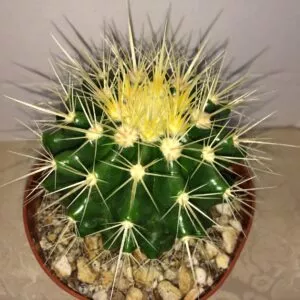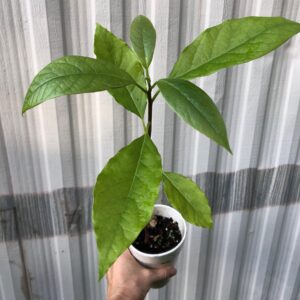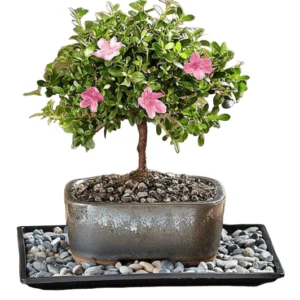No products in the cart.
No, the China Doll isn’t a literal doll but an evergreen tree popularly grown indoors for its abundant, glossy-green foliage.
Also called the Asian bell tree, Serpent tree, or Emerald tree, this plant could grow an average height of 90 feet in its native habitat. But you can also treat it as an evergreen shrub to grow in your indoor garden.
Although care and maintenance can be slightly demanding, the China doll houseplant is worth growing and keeping. Read on to learn more about the China doll plant.
PLANT NAME: Radermachera sinica
Other Name: China doll plant, Serpent tree, Emerald tree
Plant Type: Evergreen perennial tree/shrub
Native Areas: Subtropical Southeast Asia
Light Requirement: Bright indirect light
Watering: Moderate; water when the soil is 50% dry
Fertilizer: Fertilize monthly during Spring and Summer with balanced liquid fertilizer
Toxicity: Non-toxic to pets and humans
Temperature: 65-75 F (18-24 C)
Propagation: Stem tip cuttings
Growth: Fast-growing plant
Soil Type: Moist but well-draining soil
More About China Doll Plant
Native to Southern China and Taiwan, the China doll plant is a fast-growing species of evergreen tree that you can grow as an indoor plant. The plant thrives in a tropical and subtropical climate, giving off beautiful, lacy-looking green leaves once each season.
Although the China doll plant produces flowers, it rarely blooms indoors. Hence, its main attraction is its foliage. MatureChina doll plants may grow an average height of four to six feet. It has woody stems and an upright growth habit.
The plant’s growth tends to spread in all directions. So, it requires regular pruning to keep it bushy and full.
China Doll Plant Growing Guide
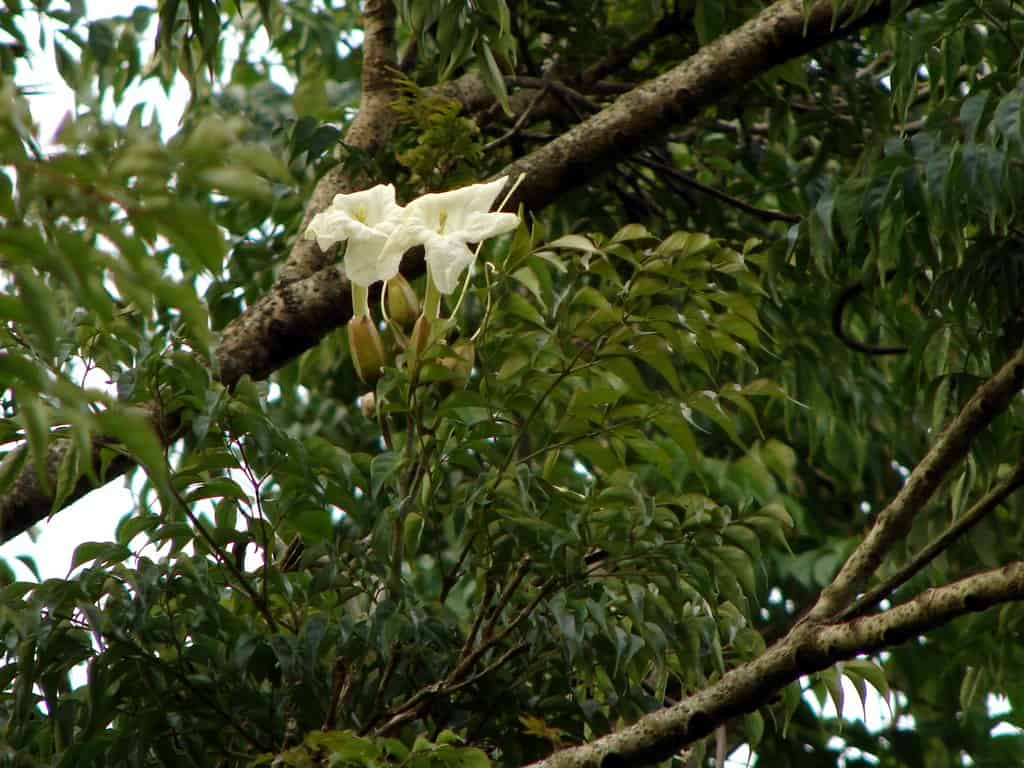
To maintain a healthy China doll plant, keep in mind that you need to maintain specific growing conditions. If you compromise these basic requirements, your vibrant doll plant will turn dull.
Here’s what to remember to make your China dolls thrive indoors.
China Doll Soil
A China doll plant would be happy with the regular potting mix intended for houseplants. But to prevent root rot, well-draining soil is necessary.
If the mix lacks aeration, you can always amend it with perlite and sand. These materials make the potting mix porous and well-draining.
It’s a general rule for potted plants to have a well-draining mix to prevent soggy soil. The same thing applies when you grow China doll plants.
China Doll Light

Plenty of light is what makes China doll plants grow fast. If grown as a houseplant, it needs exposure to bright, indirect light most of the day.
It can also benefit from direct sunlight in the morning but may require some partial shade during the hottest part of the day.
During times of low light conditions, use artificial plant light to supplement the light needs of your China doll plant. Don’t forget to rotate the plant so all parts get equal exposure to light.
Watering
Keeping China doll plants hydrated is essential to keep the leaves plump and vibrant to prevent leaf drop. Although it loves consistently moist soil, you should avoid overwatering because root rot will be a huge problem.
Here’s a watering regime to follow. Give your doll plant a deep soak to provide consistently moist soil. Then, drain the excess water before putting it back in its location. Let it dry to about 50% before watering again.
We recommend doing a finger test in the top inch of the soil to determine if your doll plant Radermachera sinica needs watering.
Temperature and Humidity
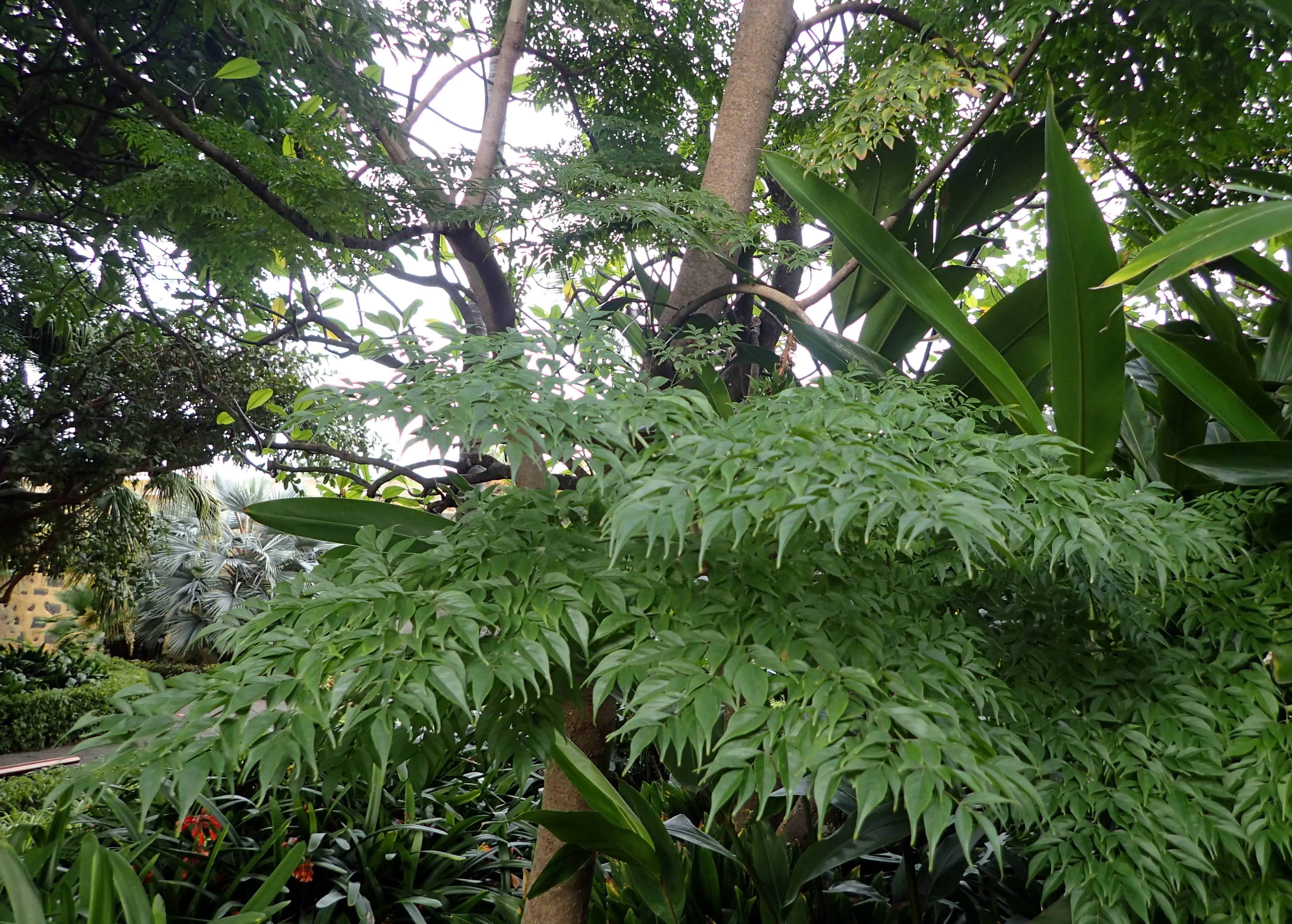
A warm and highly humid environment is crucial for maintaining the China doll plant’s health. The preferred temperature is between 65-75 F (18-24 C).
Avoid placing this plant near cold drafts, as it can stress out your China doll houseplant. During times of extreme heat or when standing in an extremely dry environment, your plant’s leaves will appreciate a daily mist.
You can grow your plant outdoors if your area is under USDA hardiness zones 10 to 12.
Fertilizer
You can feed your China doll plant with water-soluble fertilizer diluted into half or a quarter of its original recommendation. The added nutrients will help support new growth. Do it once a month during the Spring and Summer seasons only.
Another option would be to apply a slow-release fertilizer in the form of compost or other organic materials. One benefit of using a slow-release is you prevent the build-up of excess salt in the soil, preventing the odds of overfertilization.
Pruning
Pruning China dolls is essential to maintain their shape, encourage healthy growth, and prevent them from developing leggy woody stems.
Steps:
Begin by closely examining your China Doll plants. Look for areas where the plant has become leggy, has dead or yellowing leaves, or is growing in an undesirable direction.
The best time to prune a China Doll is in the spring or early summer when it’s actively growing. Avoid pruning during the dormant season.
Start by snipping off any dead or yellowing leaves. Cut them as close to the main stem as possible without damaging the branch itself. This not only improves the plant’s appearance but also encourages growth.
To maintain the desired shape of your China Doll plant, prune any branches or stems that have grown too long or are straying from the desired shape. Make your cuts just above a leaf node (where a leaf grows from the stem) to encourage branching.
If your indoor garden plant has grown too tall and you want to control its height, prune the main stem. Cut it just above a leaf node, and new growth will emerge, creating a bushier appearance.
While pruning is essential, avoid over-pruning, as it can stress the plant. Never remove more than one-third of the plant’s foliage at a time. Step back occasionally to assess the plant’s overall shape and ensure it remains balanced and aesthetically pleasing. After pruning, water your China Doll plant as needed and consider providing it with a balanced liquid fertilizer to support new growth.
-
$18.00Sold By: Smoot's Farm
In stock
Peperomia Frost 2.5 Inch Pot Beautiful Live Silver Green Plant
Rated 4.89 out of 5 based on 27 customer ratings00Sold By: Smoot's Farm -
$30.00Sold By: Cacti and Exotica
In stock
Agave attenuata–Ray of Light
Rated 4.98 out of 5 based on 59 customer ratings00Sold By: Cacti and Exotica -
$8.99 – $55.99Sold By: Succulent Oasis
In stock
Golden Barrel Cactus or Echinocactus Grusonii Cactus
Rated 4.84 out of 5 based on 352 customer ratings01Sold By: Succulent Oasis -
$17.95Sold By: SunSoul Plants
$23.95In stock
Avocado seedlings potted in 5″ pot, young starter plants
Only 3 available and it’s in 1 people’s basketRated 4.87 out of 5 based on 98 customer ratings00Sold By: SunSoul Plants
How to Propagate China Doll Plant
Propagating a China Doll plant can be done through several methods, including stem cuttings and air layering taken from mature plants.
Propagation by Stem Cuttings:
Choose a healthy China Doll plant from which to take cuttings. Look for a stem with several healthy leaves.
Use clean and sharp pruning shears to cut a 4-6 inch (10-15 cm) section of a stem. Ensure the cutting has at least a couple of leaves on it.
Remove the leaves from the lower half of the cutting, leaving just a couple of leaves at the top.
While not essential, you can dip the cut end of the stem in a rooting hormone to encourage faster rooting.
Fill a small pot with a well-draining moist potting mix. Create a small hole with a pencil or finger and insert the stem cuttings into the soil. Gently firm the soil around the cutting.
Water the cutting to ensure the soil is evenly moist but not soggy.
Place a plastic bag or plastic wrap over the pot to create a mini greenhouse effect. This helps maintain humidity and encourages root development. Ensure the plastic doesn’t touch the cutting.
Place the pot in a location with bright, indirect light. Avoid direct sunlight, as it can scorch the cutting.
Check the cutting regularly to make sure the soil remains evenly moist. Mist the cutting with water if the environment is arid. Once the cutting has developed roots (usually in 4-6 weeks), you can transplant it into a larger pot with a regular potting mix.
Propagation by Air Layering:
Choose a healthy, non-woody branch on the China Doll plant for air layering.
About 12-18 inches from the tip of the branch, make a shallow, horizontal cut around the stem. This cut should not be too deep, just enough to penetrate the outer layer of the branch.
Take a handful of damp sphagnum moss and place it around the cut section of the branch. Then, wrap plastic wrap around the moss to hold it in place.
Use twine or twist ties to secure the plastic wrap in place and prevent moisture loss.
Over the next few weeks, roots will form within the sphagnum moss. You can check for roots by carefully unwrapping the plastic and checking the moss.
Once you see substantial root growth (usually in 4-8 weeks), cut the branch below the rooted section. Plant the rooted section in a pot with well-draining soil.
Both of these methods are effective for propagating China Doll plants. The stem-cutting method is more straightforward, while air layering can be useful for larger, established plants. Make sure to provide the new plant with appropriate care, including adequate light and moisture, to help it establish and thrive.
Potting
China doll plants wouldn’t mind being pot-bound. So there’s no need to repot your plant regularly. However, if the roots start to come out of the holes and the soil is depleted, you’ll need to give your plant a new home.
Repotting China dolls is pretty straightforward. Begin by choosing a pot that’s 2 to 3 inches bigger than the old one. Then, prepare fresh soil that’s well-draining and sterile.
Replant your China doll plant in the new container and water it thoroughly afterward.
China Doll Similar Plants
Radermachera hainanensis
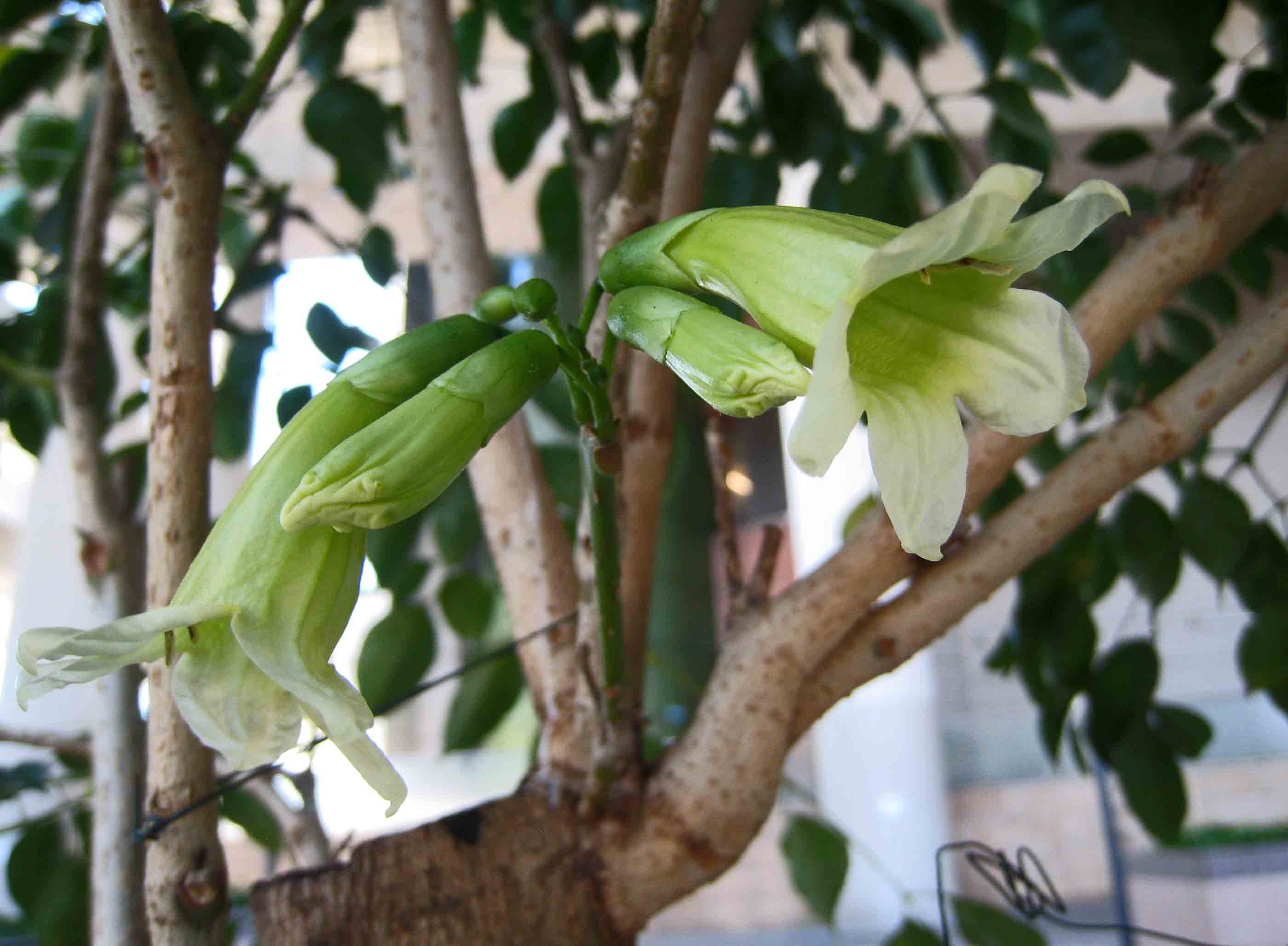
Also known as the Golden Tree Jasmine, this species is also a native of China and a close relative of the China doll plant. They belong to the same genus and family. As a tree, it grows an average height of 10 to 15 feet tall. It has green, papery leaves and apricot orange-colored flowers.
Radermachera gigantea
This species is native to Thailand and is also a relative of the China doll plant radermachera. It can grow up to 20 feet high when planted in the wild but it can also grow as a shrub plant in a pot. Its main feature is its shiny, dark green foliage.
Radermachera ignea
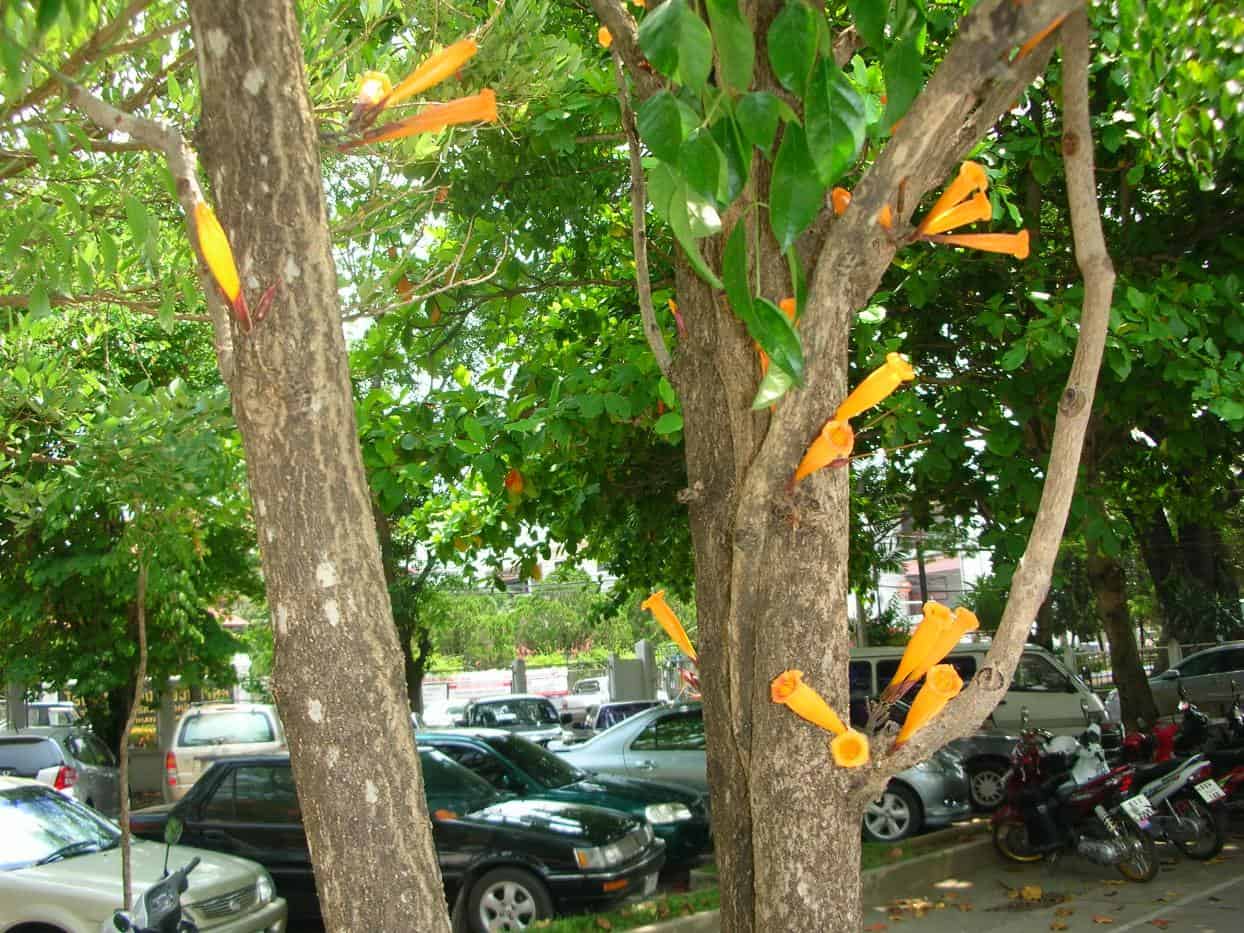
This is commonly known as the Tree Jasmine, which is also native to Thailand. It grows up to 15 feet high. This tree species is highly popular for its attractive neon orange flowers which hang down along the branches. These flowers produce that Jasmine-like fragrance.
China Doll Common Diseases and Pests
Common houseplant pests such as spider mites, aphids, and mealy bugs may infest your China doll plants. So, it’s best to regularly check the foliage for the presence of any pests and deal with them as soon as possible. You can treat them with neem oil solution, diluted in water, and liquid soap.
Spray over the affected areas repeatedly until the pests are gone.
Diseases such as leaf tip burn and leaf spot may also affect your China doll plant. To keep these diseases away, always keep the foliage dry.
Frequently Asked Questions
No, the China Doll plant is non-toxic to both pets and humans.
You should water your China Doll plants when the soil is about 50% dry. Avoid overwatering young plants, as it can cause root rot.
The ideal temperature for the China Doll plants is between 65-75 F (18-24 C).
You can propagate your China Doll plants using stem tip cuttings.
Yes, the China Doll plants require bright, indirect light for most of the day. It can also benefit from direct sunlight in the morning but may require some partial shade during the hottest part of the day.
Yellowing leaves on a China Doll plant can be due to overwatering, underwatering, low humidity, or pests. Assess your care routine, adjust watering, and inspect for pests to address the issue.
Whether you want to buy, sell, or simply reach out to other plant enthusiasts, Plantly is the right place to be!
-
$12.00Sold By: Sparkys Thriftway
In stock
Raven ZZ plant well rooted in 6” pot
Rated 5.00 out of 5 based on 1 customer rating00Sold By: Sparkys Thriftway -
$19.99Sold By: BubbleBlooms
In stock
Red Bromeliad, 4 inch, Guzmania monostachia
Only 89 available and it’s in 2 people’s basketRated 4.81 out of 5 based on 279 customer ratings00Sold By: BubbleBlooms -
$5.00Sold By: Sparkys Thriftway
In stock
uniheat heat packs
Rated 5.00 out of 5 based on 1 customer rating00Sold By: Sparkys Thriftway -
Free Shipping$111.40Sold By: BONSAI WORLD LLC
Only 1 left in stock
Azalea bonsai tree flowers pink or red 8 inch pot
Sold By: BONSAI WORLD LLC
